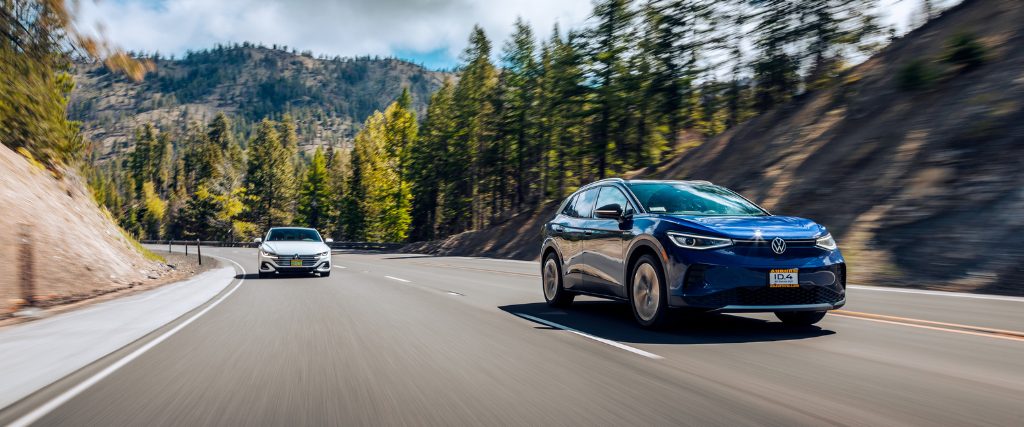Strategic actions to take where EV growth erodes fuel volumes

What are the strategic actions to take where EV growth erodes fuel volumes?
In this blog, we’ll explore two key areas: competitive positioning and adapting to the rising tide of EV adoption. By leveraging data, fuel retailers can not only withstand the impact of reduced fuel demand but position themselves effectively for growth into the future.
Let’s consider competitor activity and EV pricing – as both could be contributors to fuel volume decline.
Competitive position
Simply put, fuel volumes at a specific site or within a market could decline due to an increase in competitive intensity. That could be new entrants in the trade area or longstanding competitors adopting an aggressive pricing strategy.
Proximity is a critical competitive driver, but so is the quality of facilities, the retail offer, brand strength, and, of course, fuel price. When we conduct analysis for our clients, we often find that pricing strategies could be applied differently to competitor sites than assumptions based on pure proximity would suggest.
Competitive analysis, that considers drive time through mass mobility data (MMD), journey complexity, and brand strength can reveal who you’re really competing with – and who you should be pricing against to recover volumes and market share.
Growth of electric vehicles
The rise of EVs presents a transformative challenge to traditional fuel consumption. As more consumers adopt EVs, the demand for gasoline naturally diminishes. But how can we know where the shift towards EVs is impacting fuel volumes more than competitive impacts or other factors?
Assessing sites in isolation can give you a partial answer; but there could be situational factors impacting volumes at that one site – for example, you should also consider whether competitive intensity has increased at the site. To gain more clarity, deploying a portfolio-wide analysis can smooth out localized noise. The question to ask is – do higher levels of EV adoption within our sites’ trade areas consistently correspond to lower fuel volumes?
The EV adoption profile, developed by Kalibrate, plots consumer segments in each stage of adoption from innovators, through the early and late majority, to laggards. By applying analytics like the EV adoption profile alongside your fuel volumes, you can begin to identify patterns. Analyzing your sites’ trade areas and customer profiles against an EV adoption profile would provide clarity. Where you see consistently lower fuel volumes, and the sites’ trade areas score highly in the relevant phase of adoption, it’s likely that the growth of EV is impacting volumes.
And that volume may not be recoverable through fuel pricing strategies if overall demand is reduced.
So, what next?
Recalibrating volume targets is a logical first step. Mobility analysis of your competition in your trade areas would reveal if they’re experiencing similar dips in demand. If overall demand is reduced, tempering the volume expectations of sites in areas of EV adoption would support more effective planning. You should consider how those sites will perform as EV adoption gathers pace – and which are the next set of sites to be impacted as the EV adoption profile moves to its next phase.
A second response should involve responding specifically to EV drivers. If the forecourt is a viable candidate for installing chargers, what retail or food and drink would suit EV drivers at the current stage of adoption? Thinking about the site holistically, with ‘fuels’ as a revenue stream alongside c-store and ancillary services is critical.
Margins may be lower on EV charging when compared to fuel, but the increased dwell time provides the opportunity to extract more value from each visit. Even where fuel volumes cannot be recovered, reductions in site profitability should not be assumed. Operators that invest in understanding shifts in driver behavior and position their sites appropriately – and at the right time – are best placed to succeed.
Read more articles about:
Electric VehiclesSubscribe and get the latest updates
You may unsubscribe from our mailing list at any time. To understand how and why we process your data, please see our Privacy & Cookies Policy
Related posts
Electric Vehicles
From convenience to value: Pricing strategies for the new wave of EV drivers
As electric vehicle (EV) adoption accelerates globally, the profile of the EV driver is starting to shift. In the...

Electric Vehicles
Kalibrate launches EV Pricing solution to transform electric vehicle charging operations
Launching Kalibrate EV Pricing - the intelligent EV pricing software for strategic CPOs


